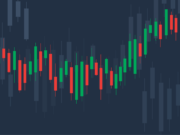The space economy, long the stuff of science fiction, is no longer a distant dream. It is rapidly materializing as a viable and transformative sector. Morgan Stanley projects that by 2040, the space economy could grow to $1.8 trillion, driven by advancements in satellite technology, space tourism, resource extraction, and national security initiatives. Investors have a rare opportunity to get in on the ground floor of this burgeoning industry.
Why the Space Economy Is Just Beginning
- Technological Advancements: Breakthroughs in reusable rockets, miniaturized satellites, and artificial intelligence are making space more accessible and cost-effective. Companies like SpaceX have revolutionized the economics of space travel by reducing launch costs.
- Government and Private Sector Collaboration: Governments around the world are partnering with private companies to develop space infrastructure. The U.S. Space Force and NASA’s Artemis program are prominent examples.
- Expanding Applications: Space technology is being applied to solve problems on Earth. From global communications to climate monitoring and precision agriculture, the potential use cases are expanding rapidly.
- Increased Capital Flows: Venture capital and institutional investors are pouring billions into space startups, signaling strong long-term confidence in the sector.
With this context, here are five stocks poised to benefit from the growth of the space economy:
1. AST SpaceMobile (Ticker: ASTS)
Thesis: AST SpaceMobile is working to build the first space-based cellular broadband network. By leveraging low-Earth orbit (LEO) satellites, the company aims to provide broadband coverage directly to standard mobile phones without requiring ground infrastructure.
- Growth Catalysts: ASTS’ partnerships with major telecom providers like Vodafone and AT&T position it to serve billions of users in under-connected regions.
- Market Potential: The global mobile connectivity market is expected to reach $1 trillion by 2030, with significant opportunities in rural and underserved areas.
2. Rocket Lab USA (Ticker: RKLB)
Thesis: Rocket Lab is a leading small-satellite launch provider. Its Electron rocket and upcoming Neutron rocket are designed to meet growing demand for frequent, cost-effective satellite launches.
- Growth Catalysts: The company’s vertically integrated operations, including satellite manufacturing and data services, provide multiple revenue streams.
- Market Potential: The small-satellite market is projected to grow at a CAGR of 20% over the next decade, with applications in communications, defense, and Earth observation.
3. Redwire Corporation (Ticker: RDW)
Thesis: Redwire specializes in space infrastructure, including in-space manufacturing, robotics, and deployable structures. Its technology is critical for constructing and maintaining space habitats and satellite systems.
- Growth Catalysts: Redwire is a key supplier for NASA’s Artemis program and other government initiatives focused on lunar exploration.
- Market Potential: As space exploration expands, demand for in-space assembly and manufacturing capabilities will grow exponentially.
4. Planet Labs (Ticker: PL)
Thesis: Planet Labs operates a constellation of Earth-imaging satellites that provide real-time data for industries like agriculture, logistics, and environmental monitoring.
- Growth Catalysts: Increasing demand for geospatial intelligence and analytics from both commercial and government customers.
- Market Potential: The geospatial analytics market is expected to reach $96 billion by 2028, driven by advancements in AI and machine learning.
5. Intuitive Machines (Ticker: LUNR)
Thesis: Intuitive Machines focuses on lunar exploration and data services. It’s a key player in NASA’s Commercial Lunar Payload Services (CLPS) program, which aims to enable lunar resource extraction and scientific research.
- Growth Catalysts: The company’s ability to deliver high-value payloads to the Moon positions it as a leader in lunar logistics.
- Market Potential: As lunar exploration progresses, demand for lunar transportation and infrastructure is set to skyrocket.
Conclusion: A Ground-Floor Opportunity
The $1.8 trillion space economy is still in its infancy, offering investors a unique opportunity to participate in its growth. Companies like AST SpaceMobile, Rocket Lab, Redwire, Planet Labs, and Intuitive Machines are at the forefront of innovation and well-positioned to capture significant market share. While the sector is not without risks—including regulatory hurdles and high capital costs—the long-term rewards could be astronomical.
Investors should consider adding exposure to these pioneering companies to capitalize on the transformational potential of the space economy.






